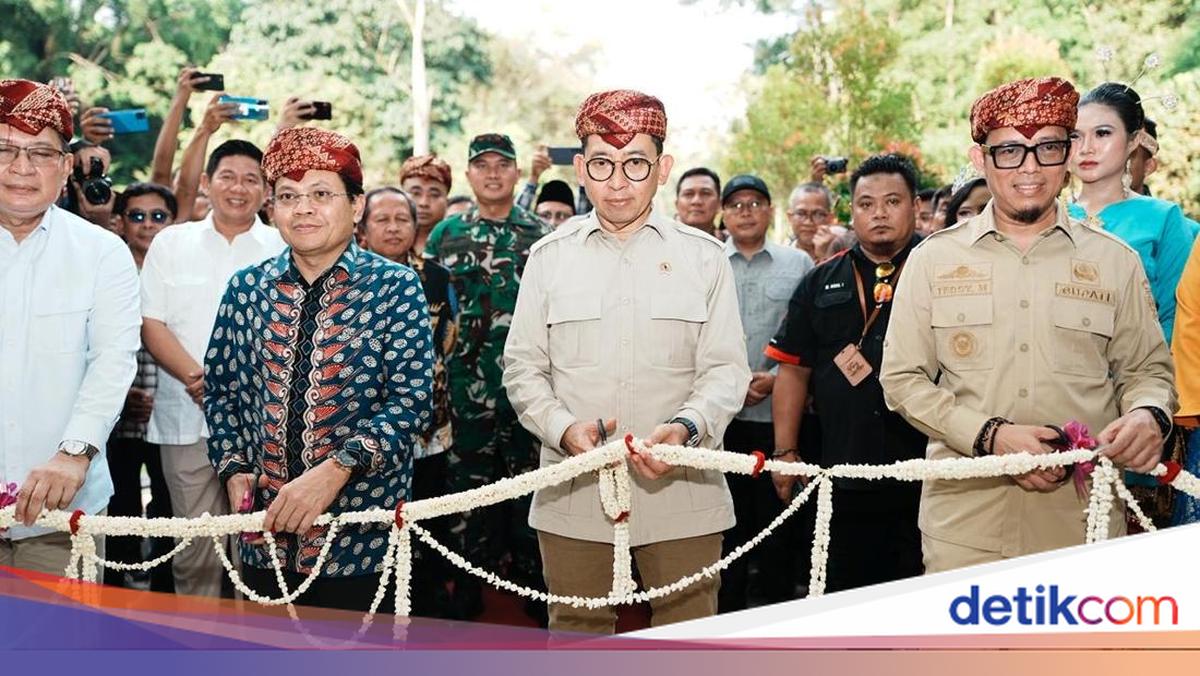Jakarta – The Minister of Culture of the Republic of Indonesia, Fadli Zon, today inaugurated the Tiger Cave Site Museum in Padang Bindu Village, Semidang Aji District, Ogan Komering Ulu Regency, South Sumatra. This museum is a form of the government’s commitment to the protection and preservation of Indonesia’s prehistoric cultural heritage. In his speech, Fadli emphasized the importance of Tiger Cave as one of the most valuable archaeological sites in the country. According to him, the findings at this site offer new insights into the early history of modern humans in the archipelago. “This Tiger Cave has many interesting findings, which we can further deepen later. Indeed, Homo erectus was not found on the entire island of Sumatra. Those found in Tiger Cave are Homo sapiens, therefore modern humans. Homo erectus was only discovered on the island of Java, and also in East Nusa Tenggara, where it was later called Homo, flor in a statement,” he said. (19/10/2025). Scroll to continue content He explained that the government has designated Tiger Cave as a national cultural heritage site and since 2015 has started building a museum to develop its archaeological findings. “In developed countries, museums always have a high throne because they are the cultural showcase and civilizational showcase of that nation. Museums are the most honorable places in developed countries and the most civilized,” he continued. He also hopes that the existence of the Tiger Cave Site Museum will not only function as an educational facility, but will also be able to boost the economy of the surrounding community. “The most important thing is how we utilize it from the existing sites, from the existing intangible cultural heritage, WBTB, develop it, develop it into a cultural economy, into a cultural industry.” he explained. Furthermore, Fadli emphasized the importance of maintaining the sustainability of the conservation of these ancient sites. “Make this site a kind of sustainable ecosystem. We hope that there will continue to be cooperation and activation of cultural activities. And hopefully this museum can revive the cultural ecosystem in the Ogan Komering Ulu area,” he added. The Tiger Cave Site Museum displays various collections from cultural heritage sites located not far from the museum, including replicas of ancient human skeletons and traces of prehistoric life dating back 22,000 years. This site was designated as a regional cultural heritage in 2017 by Decree number 430/338A/XV/2017 and a national cultural heritage in 2019 by Decree of the Minister of Education and Culture of the Republic of Indonesia number 224/P/2019. Similarly, the Director General of Culture and Tradition Protection, Restu Gunawan, also appreciated the cooperation of various parties in the preservation of the site. “When it is opened to the public, this museum can hopefully benefit the surrounding community as well as become an important milestone in the development of culture, tourism and the community’s economy,” he said. Meanwhile, the regent of Ogan Komering Ulu, Teddy Meilwansyah, also expressed his support for the preservation of Tiger Cave. “In the future, this museum will not only be a recreational facility for us, but more of a place to share information, share culture, seek knowledge, all this can be done through the Goa Harimau Museum,” he said. For your information, the inauguration of the Tiger Cave Site Museum was also attended by the Regent of Ogan Komering Ulu Teddy Meilwansyah, Deputy Regent of Ogan Komering Ulu Marjito Bachri, Head of the South Sumatra Province Culture and Tourism Service Pandji Tjahjanto, Director General of Culture and Tradition for Special Staff, Pro Restu Gunawan and the Minister of Defence. Interior Rachmanda Primayudha, Director of History and Museums Agus Mulyana, Head of the Region VI Cultural Conservation Center Kristanto Januardi, and Ogan Komering Ulu regional officials. (acn/ega)
Minister of Culture Fadli Zon inaugurates the Tiger Cave Site Museum in Ogan Komering Ulu
